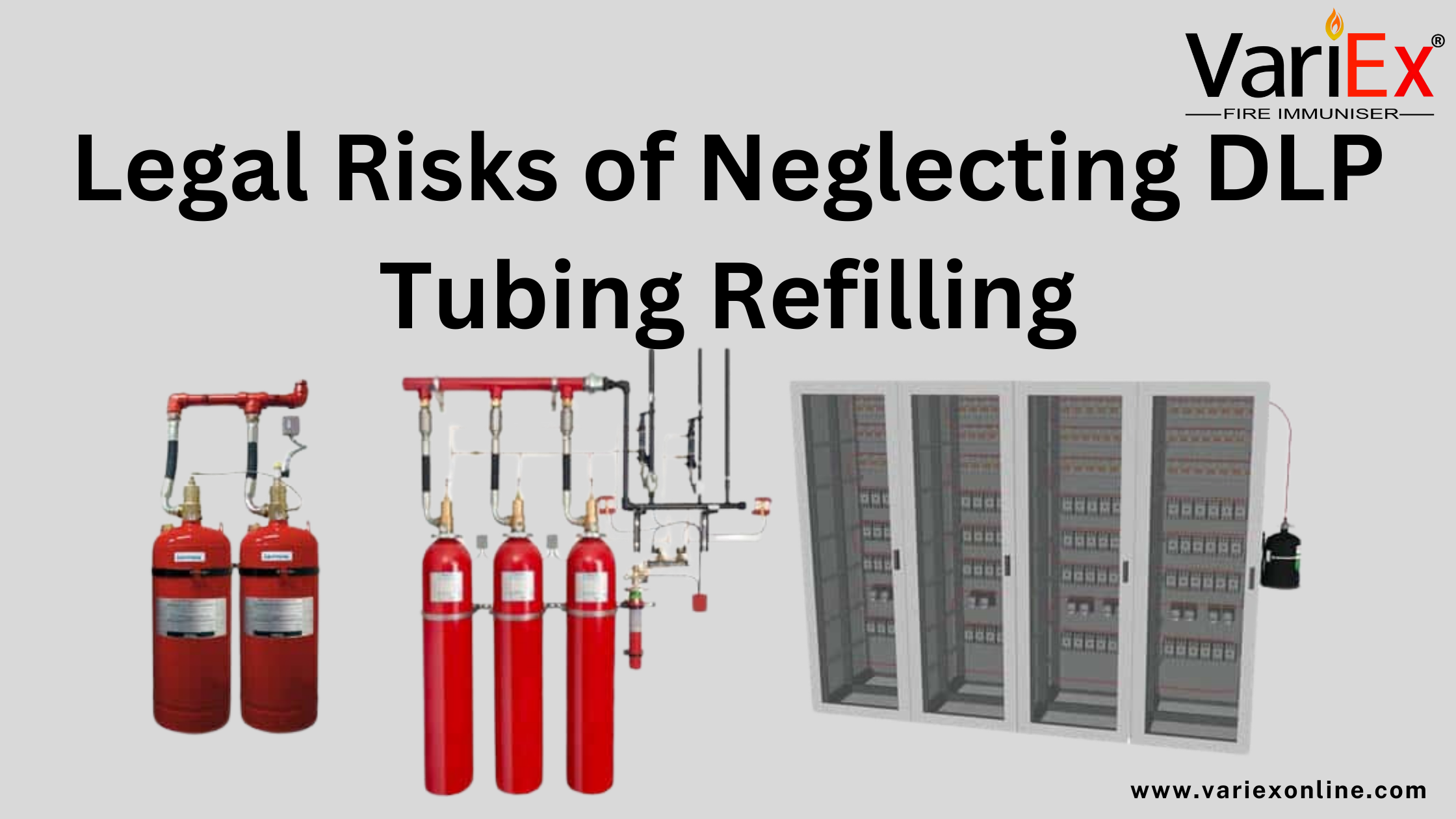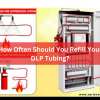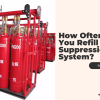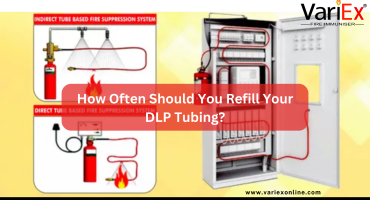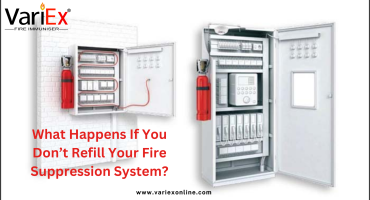![]()
Fire Immuniser
+91-7829629111
Email: info@variex.in
Varistor Technologies Pvt. Ltd.
Block-1, First Floor, Ardente Office One, Hoodi Circle, ITPL Main Road, Bengaluru, Karnataka 560048, IN
Legal Risks of Neglecting DLP Tubing Refilling
Legal Risks of Neglecting DLP Tubing Refilling
Fire suppression systems are crucial in protecting lives, assets, and businesses from devastating fire incidents. DLP (Direct Low Pressure) tubing is an integral part of these systems, designed to detect and extinguish fires before they escalate. However, neglecting DLP tubing refilling and maintenance can lead to serious legal consequences.
This article explores the legal risks, penalties, and compliance issues associated with failing to refill and maintain DLP tubing, along with the best practices to ensure compliance and avoid liability.
Understanding DLP Tubing and Its Role in Fire Safety
DLP tubing is a heat-sensitive, pressurized polymer tube that detects fires and activates the release of a suppression agent. It is widely used in industrial machinery, electrical panels, server rooms, kitchens, and vehicles for fire protection.
When the tubing ruptures due to heat, it releases an extinguishing agent, preventing fire from spreading. However, if the tubing is not refilled or maintained, the system may fail when a fire occurs, leading to severe safety, financial, and legal consequences.
Legal Consequences of Neglecting DLP Tubing Refilling
Failure to properly maintain and refill DLP tubing can result in significant legal repercussions, including:
1. Violation of Fire Safety Regulations
Most countries enforce strict fire safety codes and regulations to ensure businesses and properties maintain fire suppression systems.
| Regulatory Body | Applicable Standard | Requirement |
|---|---|---|
| National Fire Protection Association (NFPA - USA) | NFPA 17 & NFPA 2001 | Requires maintenance and refilling of fire suppression systems. |
| Occupational Safety and Health Administration (OSHA - USA) | 29 CFR 1910.160 | Mandates regular servicing of automatic fire suppression systems. |
| European Standard (EN - EU) | EN 15004-1 | Specifies fire suppression system maintenance standards. |
| Bureau of Indian Standards (BIS - India) | IS 15519:2004 | Covers fire suppression equipment inspection and refilling. |
Failing to refill DLP tubing can result in fines, legal actions, or business shutdowns due to non-compliance.
2. Increased Liability in Fire Incidents
If a fire occurs and the DLP tubing system fails due to neglect, business owners, facility managers, or landlords can be held liable for:
- Property damage due to system failure.
- Injuries or fatalities caused by inadequate fire protection.
- Third-party claims, including lawsuits from employees, tenants, or customers.
Many fire-related lawsuits result in millions of dollars in damages when negligence is proven.
3. Business License Suspension or Revocation
Regulatory authorities may suspend or revoke business licenses for non-compliance with fire safety laws.
- Hotels, restaurants, and factories are legally required to maintain fire suppression systems.
- Neglecting fire safety can lead to temporary shutdowns until compliance is restored.
- Repeated violations may result in permanent license revocation.
4. Insurance Claim Denials
Fire insurance policies require businesses to comply with fire safety regulations. If DLP tubing is not maintained, insurance companies may:
- Deny fire damage claims, leaving businesses to cover losses.
- Reduce claim payouts, citing owner negligence.
- Increase insurance premiums, labeling the business as high-risk.
A non-functional fire suppression system due to unmaintained DLP tubing can cost businesses millions in uninsured losses.
5. Criminal Charges for Gross Negligence
In cases where fire incidents result in fatalities or significant property damage, criminal charges may be filed under:
- Negligence laws (for failing to maintain fire safety measures).
- Corporate manslaughter laws (if deaths occur due to non-compliance).
- Environmental protection laws (if toxic suppression agents cause environmental harm).
Penalties can range from hefty fines to imprisonment for responsible individuals.
Best Practices for DLP Tubing Refilling and Compliance
To avoid legal consequences, businesses must implement strict fire safety compliance measures, including:
| Best Practice | Action Required |
|---|---|
| Regular Inspection | Conduct monthly visual checks for leaks, pressure loss, or tubing damage. |
| Scheduled Refilling | Refill DLP tubing annually or after activation to ensure full system functionality. |
| Professional Maintenance | Hire certified fire safety technicians for servicing and compliance audits. |
| Record Keeping | Maintain detailed fire safety logs and inspection reports for legal proof. |
| Employee Training | Train staff on fire safety protocols and emergency response. |
| Compliance Audits | Perform annual regulatory inspections to meet legal requirements. |
Case Studies: Real-Life Legal Consequences of Fire Safety Neglect
Case Study 1: Factory Shutdown Due to Non-Compliance
A textile factory in California failed to maintain its fire suppression system, leading to a 174 million fine and temporary closure after a fire outbreak. Investigations revealed expired DLP tubing, causing the system to fail.
Case Study 2: Hotel Fire Results in Insurance Denial
A luxury hotel in London suffered $10 million in fire damage, but their insurance claim was denied because their DLP tubing system had not been refilled in five years. The hotel had to cover the costs out of pocket.
Case Study 3: Criminal Charges for Fire Deaths
In India, a factory fire killed six workers due to a faulty fire suppression system. The owner was arrested for negligence, as the DLP tubing had not been serviced in over three years.
Conclusion
Neglecting DLP tubing refilling and maintenance is not just a safety risk—it’s a legal liability that can lead to fines, lawsuits, insurance losses, and even criminal charges.
To protect businesses, employees, and customers, it is essential to:
✅ Schedule regular refilling and maintenance.
✅ Comply with fire safety regulations to avoid penalties.
✅ Keep detailed records to prove compliance.
✅ Hire certified professionals for inspections and servicing.
Investing in proper DLP tubing refilling and maintenance ensures fire safety, legal compliance, and financial security.
Frequently Asked Questions
Neglecting refilling can result in system failure, legal penalties, insurance claim denials, and liability in fire incidents
DLP tubing should be refilled annually or immediately after activation to maintain effectiveness.
Yes, businesses can face temporary closures, fines, or permanent license revocation for non-compliance.
No, most insurance companies deny claims if fire suppression systems were not properly maintained.
No, most insurance companies deny claims if fire suppression systems were not properly maintained.
Final Say
At VariEx.in and VariexOnline.com, we specialize in supplying and installing top-quality fire fighting systems and equipment. From fire extinguishers to advanced suppression systems, we offer comprehensive solutions tailored to your needs. Our experienced team ensures precise installation and maintenance for optimal safety.
Trust VariEx for reliable fire protection. Contact us online or call 7829629111 to learn more.
We specialize in manufacturing, supplying, and distributing a comprehensive range of fire fighting equipment, including state-of-the-art fire extinguishers. Read our most searched blogs and find interesting information on topics such as how to use a fire extinguisher, how to calculate fire fighting water tank capacity, fire extinguisher refilling, obtaining a Fire NOC, understanding fire fighting systems, types of fire protection systems, the fire hydrant system, and the fire sprinkler system. These resources provide essential knowledge for ensuring safety and compliance with fire safety regulations. Additionally, you can explore guides on the maintenance of fire protection equipment, the latest advancements in fire safety technology, and best practices for fire risk assessment and management.
Our expertise extends to fire alarm systems, fire hydrant systems, and fire suppression systems, including fire sprinklers. Each product meets rigorous international standards for reliability and performance, ensuring effective fire safety products tailored to diverse applications and industries. Additionally, we are providing Fire Extinguisher Refilling and AMC services to ensure ongoing maintenance and operational readiness of fire safety equipment.
"WHAT YOU CAN READ NEXT"
 Read more +24 November 2023 in Fire Extinguisher
Read more +24 November 2023 in Fire ExtinguisherWhat types of fire extinguishers are available for different fire classes?
 Read more +11 April 2025 in Fire Suppression
Read more +11 April 2025 in Fire Suppression

